#kashi vishwanath mandir
Explore tagged Tumblr posts
Text
Guide to Assi Ghat Varanasi Aarti Timings and Kashi Vishwanath Mandir
Assi Ghat, one of the most revered ghats in Varanasi, is a place where peace and spirituality combine. Witnessing the holy Aarti rite conducted here is an amazing scene. For tourists hoping to see this holy ritual, knowing the Assi Ghat Varanasi Aarti time is important. This guide will make sure you have a meaningful spiritual experience in Varanasi by giving you all the important details about Assi Ghat, its Aarti timings, and the adjacent Kashi Vishwanath Mandir.
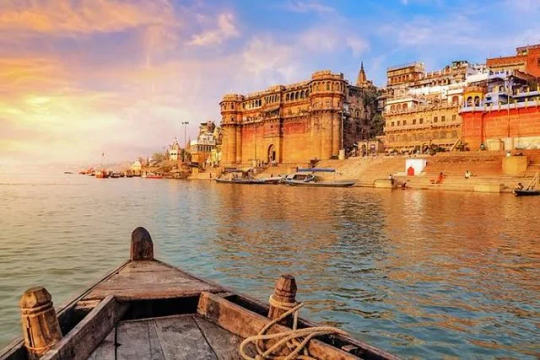
The Essence of Assi Ghat Varanasi
At the point where the Assi River and the Ganges meet in the southernmost point of the city is Assi Ghat Varanasi. This ghat has great religious significance because it is thought that the Ramcharitmanas was written by the legendary poet Tulsidas there. From sunrise till sunset, pilgrims are taking holy dips, carrying out rituals, and asking for blessings at the ghat, which is a hive of activity. Assi Ghat is a popular destination for both locals and visitors because of its tranquil the environment, which provides the ideal setting for contemplation and meditation.
The Sacred Banaras Assi Ghat Aarti
Every day, the mesmerizing Aarti ritual at Banaras Assi Ghat attracts hundreds of devotees and visitors. Two times a day, at sunrise and sunset, the devotional song known as the Aarti is performed, followed by the waving of lit lamps. Usually, the evening Aarti starts at 6:30 PM, while the morning Aarti starts at approximately 5:00 AM. But depending on the season, these times may change somewhat. Getting there early guarantees you a prime location to take in the memorable event.
Priests dressed in traditional garb sing songs and prayers during the Aarti, creating a sacred and peaceful atmosphere. The experience is dreamlike due to the timing of the rhythmic chants, the scent of candles, and the sight of the flickering lighting on the river. This ceremony is a must-attend event for anybody visiting Varanasi, as it represents the purifying of the mind and soul.
Exploring Kashi Vishwanath Mandir
No visit to Varanasi is complete without paying homage to the Kashi Vishwanath Mandir, one of the most sacred temples in Hinduism. Located just a short distance from Assi Ghat, this temple is dedicated to Lord Shiva, the presiding deity of the city. The Kashi Vishwanath Mandir stands as a beacon of faith and devotion, attracting millions of pilgrims from across the globe.
The temple's history dates back to ancient times, with numerous reconstructions and renovations over the centuries. The current structure, built in 1780 by Maharani Ahilyabai Holkar, features a magnificent gold-plated spire, earning it the nickname "Golden Temple." The temple complex houses several smaller shrines dedicated to various deities, making it a hub of religious activities.
Visiting the Kashi Vishwanath Mandir requires adhering to certain protocols. Devotees are required to dress modestly and undergo a security check before entering the premises. The temple is open from 4:00 AM to 11:00 PM, with specific hours allocated for different rituals. Participating in the Mangala Aarti, which takes place early in the morning, is considered highly auspicious. It's advisable to check the official website or contact the temple administration for the latest timings and guidelines.
How to Reach Assi Ghat and Kashi Vishwanath Mandir
Varanasi is well-connected by air, rail, and road, making it accessible from major cities in India. The Lal Bahadur Shastri International Airport is about 25 kilometers from the city center, with regular flights to and from major Indian cities. Varanasi Junction and Manduadih Railway Station are the primary railway hubs, connecting Varanasi to various parts of the country.
Once in Varanasi, you can hire a taxi, auto-rickshaw, or cycle-rickshaw to reach Assi Ghat and Kashi Vishwanath Mandir. The city's narrow lanes can be a bit challenging to navigate, so it's often best to explore on foot or by cycle-rickshaw for an authentic experience. Many local guides offer walking tours that cover major ghats and temples, providing deeper insights into the city's spiritual and cultural heritage.
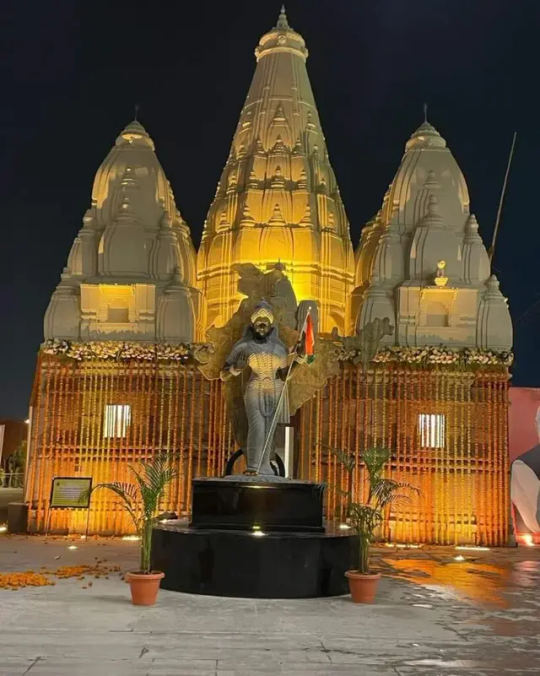
Tips for a Memorable Visit
Timing is Everything: Knowing the Assi Ghat Varanasi Aarti time and the temple's ritual schedule will help you plan your visit better.
Dress Appropriately: Wear modest clothing that covers your shoulders and knees. This is important for both the Aarti at Assi Ghat and visiting Kashi Vishwanath Mandir.
Stay Hydrated: Carry a bottle of water, especially if you plan to explore the ghats and temples on foot.
Respect Local Customs: Be mindful of the religious practices and customs. Photography may be restricted in certain areas, especially inside the temple.
Stay Safe: Keep your belongings secure and be cautious of your surroundings, especially in crowded areas.
Conclusion
A trip to Kashi Vishwanath Mandir and Assi Ghat Varanasi gives a deep spiritual experience, blending the holy aura of one of Hinduism's holiest temples with the peace of the Ganga. Knowing the time of the Assi Ghat Varanasi Aarti allows you to experience the mesmerizing ceremony that reflects Varanasi's spiritual soul. Discovering the holy Kashi Vishwanath Mandir strengthens this bond and leaves you with enduring recollections. The trip to Varanasi is sure to bring you calm and enlightenment, regardless of whether you are a pilgrim seeking blessings or a tourist searching for a distinctive cultural experience.
#Assi Ghat Varanasi Aarti Time#Banaras Assi Ghat#Assi Ghat Varanasi#kashi vishwanath mandir#kashi#kashi banaras#banaras#Manikarnika Ghat#Durgakund Mandir#New Vishwanath Temple
3 notes
·
View notes
Text
Kashi Vishwanath Temple is one of the holiest 12 Jyotirlingas in India. The main God of Kashi Vishwanath Temple is Lord Shiva, also known as Vishwanatha or Vishweshwarar meaning’ the ruler of the universe’. The megacity of Varanasi, the artistic capital of India, is therefore known as the megacity of Lord Shiva. The palace of the temple is plated with 800 kg of gold. The temple also has several other smaller Mandir like Kalabhairava, Vishnu, Virupaksha Gauri, Vinayaka, and Avimukteshwara. The Best Time to Visit Kashi Vishwanath Temple is from October to March Month.
Click here - https://happytraveltips.in/kashi-vishwanath-temple/
#Kashi Vishwanath temple#Kashi Vishwanath Temple Varanasi#Kashi Vishwanath temple timings#Kashi Vishwanath temple story#shri kashi vishwanath temple#Best Time to Visit Kashi Vishwanath Temple#kashi vishwanath mandir#kashi vishwanath jyotirlinga
0 notes
Text
Temples in varanasi | Exploring the Spiritual Heart of India
Temples in varanasi not merely places of worship but embodiments of profound spirituality and cultural heritage. The city's ancient holiness makes it a sacred geography in Hinduism. The mystical beauty of Varanasi's temples transcends the physical realm, offering a profound spiritual experience that lingers long after you have left this ancient city, As you wander through the sacred city's ancient streets, you'll encounter a divine realm that transcends time, leaving an everlasting imprint on your soul.
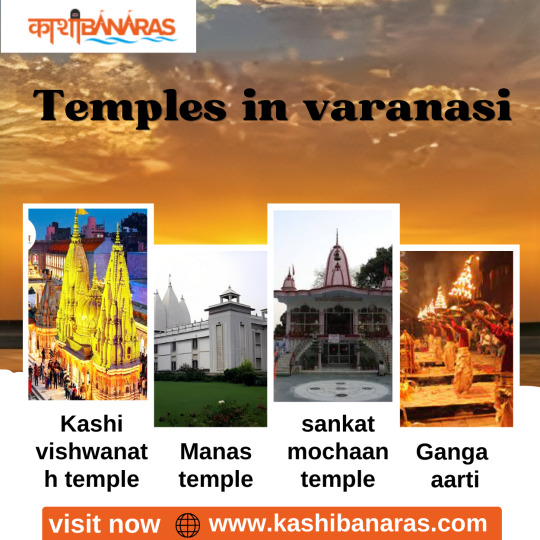
#temple#tulsi manas temple#temples#kashi vishwanath temple#temples in varanasi#ram mandir#har har mahadev#manikarnika ghat#hanuman mandir#manikarnika#hotels in varanasi#vaksinasi#vacation#varanasighats#bajrangbali
8 notes
·
View notes
Text
Top Reasons to Choose the Kashi Vishwanath Tour for Your Next Pilgrimage
Looking for a pilgrimage that offers both divine connection and inner peace? The Kashi Vishwanath Tour is one of the most profound spiritual journeys one can undertake. Nestled on the banks of the holy River Ganga in Varanasi, the Kashi Vishwanath Temple draws millions of pilgrims every year—and for good reason.

If you’ve been wondering why this tour is constantly recommended for spiritual seekers, here are the top reasons to make the Kashi Vishwanath Tour your next pilgrimage:
1. The Spiritual Magnetism of Lord Shiva
At the heart of the Kashi Vishwanath Tour is one of the twelve Jyotirlingas, where Lord Shiva is worshipped as Vishwanath, the “Lord of the Universe.” The spiritual energy in this sacred space is unmatched and creates a strong pull for devotees seeking divine blessings and moksha.
2. The Ancient, Ever-Living City of Varanasi
Varanasi is said to be older than history itself. During your Kashi Vishwanath Tour, you’ll walk through ancient lanes, hear timeless mantras, and witness rituals that haven’t changed in thousands of years. It's like stepping into the soul of India.
3. The Powerful Ganga Aarti Experience
The evening Ganga Aarti at Dashashwamedh Ghat is an unforgettable part of the Kashi Vishwanath Tour. The synchronized chants, the glowing lamps, and the devotion in the air create a magical experience that touches the heart of every pilgrim.
4. The Revamped Kashi Vishwanath Corridor
One of the biggest recent upgrades is the development of the Kashi Vishwanath Corridor. With wider access, open spaces, and direct connectivity to the Ganga ghats, your Kashi Vishwanath Tour is now more comfortable, organized, and immersive than ever before.
5. A Deeply Transformative Experience
This tour isn't just a visit to a holy temple. It’s a journey of the soul. Most devotees report feeling lighter, more peaceful, and spiritually recharged after their Kashi Vishwanath Tour. Whether you're a first-timer or a returning pilgrim, the transformation is real.
Final Thought
The Kashi Vishwanath Tour is not just about rituals—it’s about reconnecting with your faith, rediscovering your inner self, and experiencing the divine in its purest form.
Let varanasiayodhya be your travel companion in this sacred journey, making your Kashi Vishwanath Tour smooth, memorable, and spiritually fulfilling.
#kashi vishwanath dham tour package#ayodhya tour package#varanasi ayodhya#varanasi tour package#varanasi ayodhya tour package#ram mandir#kashi vishwanath tour package#ayodhya#ram mandir ayodhya#ayodhya varanasi tour#yuno kashiki#dagashi kashi
0 notes
Text
PM Modi: Shri Kashi Vishwanath Mandir in Varanasi
0 notes
Text
Kashi Vishwanath Tour
With its devotion to Lord Shiva, the Shri Kashi Vishwanath temple in Varanasi is widely considered to be among the most well-known temples in all of India. Soaring magnificently on the western bank of the holy Ganga river, this celestial temple is one of the twelve Jyotirlingas that are considered to be the holiest places in the world. Ahilya Bai Holkar is responsible for the construction of this stunning temple. It is stated that anyone who visits the temple and takes a bath in the Ganges, which is considered to be sacred, would be rescued.
Please Visit our Website Trip Counselors For More Information.
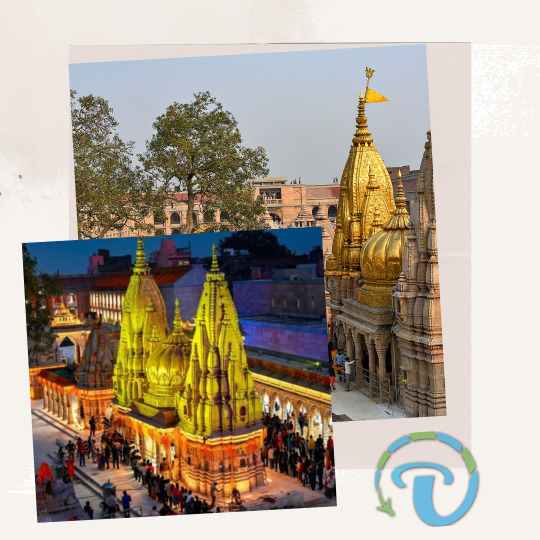
#kashi vishwanath tour#kashi vishwanath tour package#kashi vishwanath temple tour package#kashi vishwanath trip#gaya kashi mandir#kashi temple tour#kashi vishwanath temple tour#varanasi temple tour#visit kashi vishwanath temple#kashi vishwanath mandir tour#trip to kashi vishwanath temple#trip counselors#trip planner#easy trip planners#itinerary planner#vacation planner#plan my trip#solo trip#tour planner#travel plan#tour and travel#travel with friends#couple tour
0 notes
Text




Heavens I need to visit....🤌💗
❁ Vrindavan Isckon temple ❁ ❁ Kashi Vishwanath temple ❁ ❁ Kedarnath temple ❁ ❁ Prem mandir ❁
#hinduism#temple#desiblr#desi tumblr#mahadev#krishna#manifesting#desi tag#desi core#desi aesthetic#indian tumblr
220 notes
·
View notes
Text
Books to Learn More About Hindu History





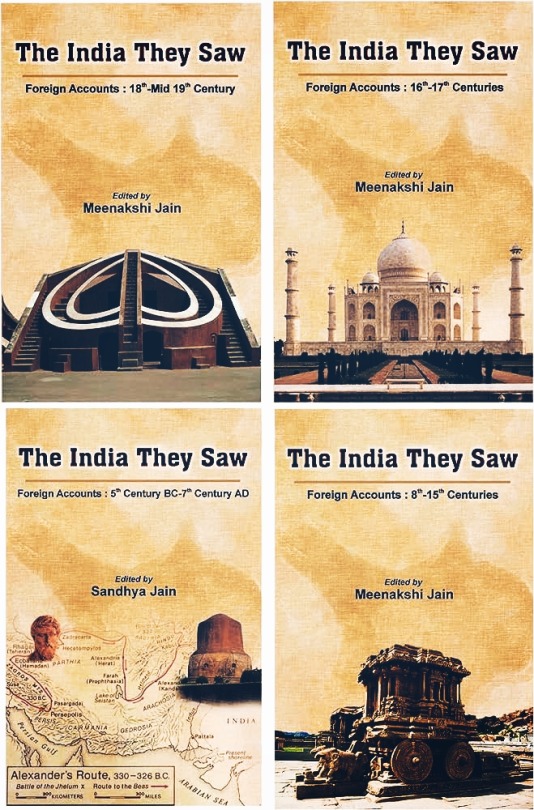
List and description under the cut >>
The India They Saw : Foreign Accounts from 5th Century BC -> 19th Century
Spanning over 4 volumes, this comprehensive collection brings together account of various foreign travelers, explorers and scholars. Their wonder at her rich philosophical efflorescence and material abundance.
Hindu Temples : What Happened To Them Vol 1+2, Sita Ram Goel
The first volume includes a list of 2,000 mosques that the author claims were built on Hindu temples, based primarily on the books of Muslim historians of the period or inscriptions found on mosques. The second volume excerpts from medieval histories and chronicles and from inscriptions concerning the destruction of Hindu, Jain and Buddhist temples. The authors claim that the material presented in the book as "the tip of an iceberg"
Heroic Hindu Resistance to Muslim Invaders (636 AD - 1206 AD), Sita Ram Goel
An analysis of Ram Gopal Misra's Indian resistance to early Muslim invaders, up to 1206 A.D.
Invaders and Infidels: From Sindh to Delhi: The 500-Year Journey of Islamic Invasions, Sandeep Balakrishna (Book 1 + 2)
Tells the story of the origins and trajectory of Islamic invasions into India. It begins with the first Muslim conquest and ends with Babur's invasion of Hindustan, spanning the period of the Delhi Sultanate which was in power for almost 320 years. This epochal story encompasses a vast sweep of events, which changed the history of India forever, and introduced it to an alien faith and a religious despotism such as the country had never experienced before. It comprises major and minor sagas of great heroism, untold savagery, stout resistance, brutal intrigues and epic tragedies.
The Hindus of Hindustan: A Civilizational Journey, Meenakshi Jain
Notwithstanding the views of a section of historians and literati, spiritual, religious, and cultural continuity in India goes back many millennia. Identification with, and adoration of, the land was expressed in the sixty-three verses long Prithvi Sukta of the Atharva Veda, described as the first “national song” in the world. Veneration of the land remained a recurrent theme in sacred literature.
Kautilya, in the Arthasastra, articulated the ideal of political unification, when he said that from the Himalayas to the seas, the land should have one ruler. That ideal was accompanied by a consciousness of cultural union.
Evidence of continuity of religious beliefs and motifs could be traced to the late Upper Palaeolithic (c. 9000-8000) site of Baghor I (Sidhi district, Madhya Pradesh), to the celebrated Indus Valley Civilization, and well thereafter.
Fight For Deities and Rebirth of Temples, Meenakshi Jain
This work examines the medieval response to temple destruction and image desecration. While temples were destroyed on a considerable scale, also noteworthy were the repeated endeavours to reconstruct them. In each instance of rebirth, the temple retained its original name, even though there was a visible downsizing in its scale and grandeur. The Keshava temple at Mathura, the Vishwanath temple at Kashi, the Somnath temple in Saurashtra, the Rama mandir at Ayodhya were among the shrines continually restored, well after Hindus had lost all semblance of political power. The Bindu Madhava, the most important Vishnu temple in Varanasi, was demolished in 1669 and a mosque constructed in its place. The temple now bearing the name Bindu Madhava is a modest structure in the shadow of the mosque, but continues the traditions associated with the site. Intriguingly, mosques built on temple sites often retained the sacred names —Bijamandal mosque, Lat masjid, Atala masjid, Gyanvapi mosque, and not to forget, masjid-i- janamsthan.
The Battle for Rama, Case of Temple at Ayodhya, Meenakshi Jain
From questioning the antiquity of Rama worship and the identity of ancient Ayodhya, certain historians have also challenged the widely held belief that Babri Masjid was built on the site of the Janmabhumi temple. Scholars have, however, traced the antiquity of the Rama Katha as far back as the sixth-fifth century BCE, when ancient ballads (Akhyanas) transmitted Rama's story orally. Valmiki’s Ramayana itself has been dated to the fourth-third century BCE. Over the centuries, Rama's story has been re-told in many vernaculars of the country. Rama is the exemplar of moral values for Hindu society and epitomizes its aspirations of Artha, kama, and above all, dharma. The proceedings of the Allahabad High Court have exposed the vulnerabilities of Left historians. They could proffer no evidence of continued Muslim presence at Babri Masjid, while the unwavering commitment of Hindu devotees to the site has been attested by several sources. Babri Masjid was not mentioned in the revenue records of the Nawabi and British periods, nor was any Waqf ever created for its upkeep. No Muslim filed an FIR or complained of dispossession or obstruction in his alleged use of the Masjid when the image of Sri Rama was placed under the central dome on 23rd December 1949. The Sunni Central Waqf Board entered litigation on 18th December 1961, just five days before the twelfth anniversary of the placement of the image in the Masjid, on which date any claim would have become time-barred. The Board did not file a suit for a possession; instead, it sought a declaration on the status of the property. Further, excavations of the ASI revealed uninterrupted occupation of the site since the 13th-century BCE. They also exposed remnants of the temple on which Babri Masjid was erected. The assertions of Left historians on Babri Masjid have all been found to be erroneous, yet there has been no public retraction. Indeed, they continue to peddle their discredited theories despite the mounting evidence against them.
Waiting for Shiva: Unearthing the Truth of Kashi’s Gyan Vapi, Vikram Sampath
Half Temple, Half Mosque. Few places in the world carry the heavy burden of history as effortlessly as Kashi, or Varanasi, has. The holy city embodies the very soul of our civilization and personifies the resilience that we have displayed over centuries in the face of numerous adversities and fatal attacks.
Waiting for Shiva documents these cataclysmic events in the temple’s history. The final death blow was dealt in 1669 by the Mughal despot Aurangzeb, who demolished the temple and erected few domes on the partially destroyed western wall to call it a mosque. The temple complex was desecrated and left strewn with ruins as a grim reminder of the humiliation and insult that Hindus had to face as a consequence of their holiest shrine being torn down to smithereens. The area that is now called the Gyan Vapi mosque and the surrounding land that lies adjacent to the new temple of Vishwanath, which came up towards the end of the 18th Century, has always been one of intense contestation.
Vasudeva Krishna and Mathura, Meenakshi Jain
This work examines the antiquity of image worship in India. Its main focus is the Bhagavata religion that evolved around Vasudeva Krishna of the Vrishni clan. At Mathura, several noteworthy archaeological finds dated to the early Common Era were recovered from the site of Katra Keshavadeva.
In the medieval period, Katra Keshavadeva was subjected to repeated devastation, beginning with that by Mahmud Ghaznavi in 1071 CE. However, within a century a temple dedicated to Vishnu was built at Katra Keshavadeva. Thereafter, the story of destruction followed by construction was repeated over and over again. In 1670, the Mughal emperor, Aurangzeb ordered its destruction. An Idgah was built at the site. Later developments at Katra Keshavadeva were recorded in the judicial records of colonial India. In 1815, Katra Keshavadeva was sold by auction to Raja Patnimal of Banaras.
Sati : Evangelicals Baptist Missionaries and the Changing Colonial Discourse, Meenakshi Jain
In it, as a meticulous professional historian, she quotes all the relevant sources, with descriptions of Sati from the ancient through the medieval to the modern period. She adds the full text of the relevant British and Republican laws and of Lord Wiliam Bentinck’s Minute on Sati (1829), that led to the prohibition on Sati.
This book makes the whole array of primary sources readily accessible, so from now on, it will be an indispensible reference for all debates on Sati.
Hindus in Hindu Rashtra, Anand Rangnathan
To those who claim we are now living in a totalitarian, fascist, Hindu Rashtra, one must ask: What kind of a Hindu Rashtra is this where a billion-strong Hindus have been, through our parliament, through our courts, our education system, and our constitution, reduced to not just second-class but, rather, eighth-class citizens? What kind of Hindu Rashtra is this where Ram Navami, Hanuman Jayanti, Durga pooja processions, and even Garba celebrations, are attacked and stoned with impunity? What kind of Hindu Rashtra is this where a sitting Prime minister says minorities have the first right to resources? What kind of Hindu Rashtra is this where Hindus are forced to be refugees in their own land, where one can settle 40,000 Rohingya Muslims but not 700,000 Kashmiri Hindus, the land’s original inhabitants; where the judiciary says it is too late to prosecute those who raped, murdered, and ethnically cleansed lacs of Hindus? What kind of Hindu Rashtra is this where Hindu temples are exclusively controlled by the State, where Hindus must beg for Waqf land to celebrate their festival while the government usurps hundreds of thousands of acres of temple land and is responsible for more than 100,000 temples losing lakhs of crores in rental income? What kind of Hindu Rashtra is this where the Right to Education Act discriminates only against Hindus and their schools, forcing tens of thousands of them to shut down? What kind of Hindu Rashtra is this where monsters like Aurangzeb and Tipu who perpetrated large-scale Hindu genocides are eulogised through State sponsored publications, naming of roads and cities, and organising of festivals? What kind of Hindu Rashtra is this where a law was about to be enacted through with only the Hindus would have been held guilty in a communal riot even if they were in a minority for example in Kashmir? What kind of Hindu Rashtra is this where court judgments like the Sabarimala and legislative enactments like the Hindu Code Bill purport to reform only Hindu religious practices but dare not touch practices of other religions, and if they do, the decisions are promptly reversed like in the Shah Bano case? What kind of Hindu Rashtra is this where The Places of Worship Act continues to deny the Hindus their legitimate right to correct historical injustices and reclaim thousands of demolished temples? What kind of Hindu Rashtra is this where the Waqf Act gives overarching powers to Muslims to declare a 1500-year-old Hindu temple to be on Islamic land when Islam is only 1300 years old? If this is how a Hindu is rewarded in a Hindu Rashtra, he’d much rather be in a Muslim Rashtra because then at least there’d be no pretence of equality - a Kafir will get what he deserves. In this searing commentary penned with clinical precision, the author shreds to smithereens once and for all the guilt-tripping, self-loathing fake narrative that Hindus have been duped with since Independence. There is no pretence, no political correctness, only unvarnished truth – that the Hindus are living under State-sanctioned Apartheid.
India that is Bharat, J Sai Deepak
India, That Is Bharat, the first book of a comprehensive trilogy, explores the influence of European 'colonial consciousness' (or 'coloniality'), in particular its religious and racial roots, on Bharat as the successor state to the Indic civilisation and the origins of the Indian Constitution. It lays the foundation for its sequels by covering the period between the Age of Discovery, marked by Christopher Columbus' expedition in 1492, and the reshaping of Bharat through a British-made constitution-the Government of India Act of 1919. This includes international developments leading to the founding of the League of Nations by Western powers that tangibly impacted this journey.
#hindublr#hinduism#ancient india#esther shrieks*#book recommendations#hindu history#indian history#j sai deepak#anand ranganathan#hindutva#meenakshi jain#ram janambhoomi#ram mandir#gyanvapi mandir#babri masjid#mughal empire#sita ram goel#mathura#krishna janambhoomi#sati#jauhar#india that is bharat#hindus in hindu rashtra#indian authors#indian writers#indus valley civilisation#kashmir#kashmir is hindu#books books books#india
315 notes
·
View notes
Text
One of the happiest thing I saw is Shri K. N rao ji's prediction. Not only he is an amazing astrologer, he has a yogic background. He is one of the greatest astrologers India has ever had. He has predicted India will become Hindu rashtra. He also said we will take over kashi vishwanath mandir and Krishna's mathura. I don't think his prediction will go wrong. He even predicted modi's victory beforehand.
Just love the way he said "Strong Hindu Rashtra banke rahega, koi rok nahi sakta"
Looking forward for our country to shine as Hindu rashtra.
Watch his prediction onwards from 0:32 seconds.
youtube
#hindublr#hinduism#astrology#vedic astrology#astro community#astro observations#kn rao#hindu rashtra#Youtube
8 notes
·
View notes
Text
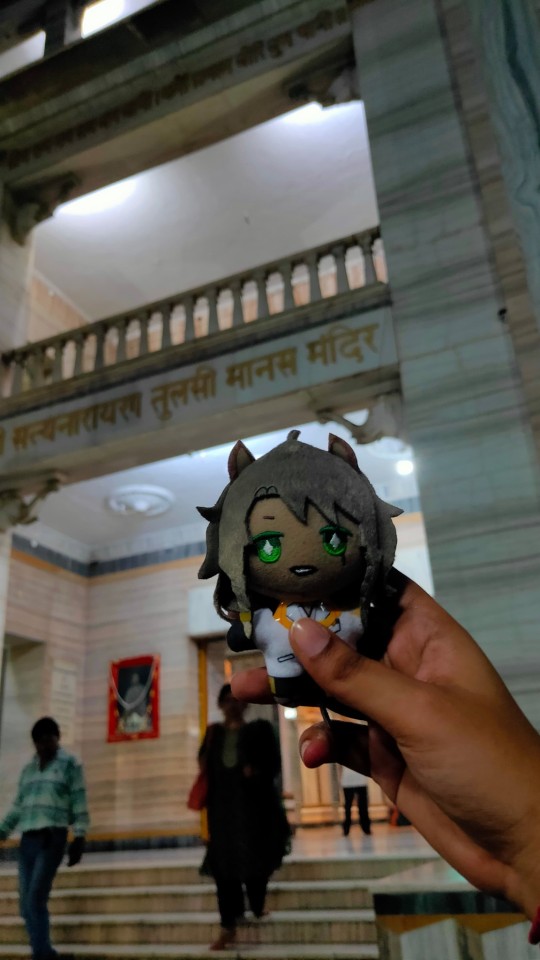
Day 2
We went to Kashi Vishwanath Temple at dawn and since we didn't carry bags, I couldn't bring my nui with. In hindsight, it was a good thing because it was sweltering and my palms were sweating. My only regret is not being able to put him next to Nandi ji's ear. We went back at 6AM.
In the evening, we went to Sankat Mochan Hanuman Mandir where we weren't allowed our phones so I couldn't take pictures of nui.
Next, we went to Shri Satyanarayan Tulsi Manas Mandir where the picture is from. There was an animatronic Tulsidas near the entrance which I have conflicted feelings about.
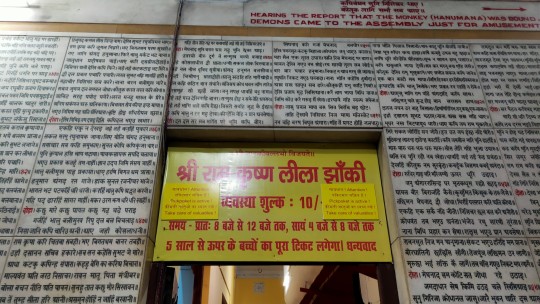
While there, we went inside the Shri Ramkrishna Lila Jhaki where there were animatronics on the various event from Ramayana. It was more fun than expected!

Dinner was Kashi Chaat of course.
That is all, see you next time~
12 notes
·
View notes
Text
Feel the energy of Spiritual Sound at Ganga Aarti in Varanasi
one of the oldest living cities in the world, Varanasi. offers an unparalleled spiritual experience. The world comes to Varanasi to witness the famous Ganga Aarti, a captivating ceremony. Every evening, the Ganga Aarti in Varanasi, a colorful display of light and melody that represents Hinduism's veneration of the Ganga river, is held on the ghats of the holy Ganges.
#mandir#tourism#travel#banaras assi ghat#kashi vishwanath mandir#assi ghat varanasi#banaras#tourist place in banaras
0 notes
Text
Top 4 Famous Shiv Mandirs of Bharat

Famous Shiv Mandirs of Bharat
India abounds in magnificent temples dedicated to Lord Shiva, one of the most revered Hindu deities. hese ancient shrines attract millions of devotees from across the globe. The architecture, rituals and beliefs associated with these temples are fascinating.
This blog post introduces you to four of the most famous Shiv Mandirs that should be on the itinerary of every spiritual seeker in India.
Lord Shiva exemplifies the glorious history and culture of Bharat. Their grandeur, antiquity and religious significance make them architectural marvels you cannot miss.
Somnath Temple, Gujarat
One of the 12 Jyotirlingas of Lord Shiva
Believed to be first among the twelve shrines of Shiva
Destroyed and rebuilt 16 times in history
Visited by millions of devotees annually
Kashi Vishwanath Temple, Varanasi
One of the most revered Shiv mandirs
Located on the banks of Ganga river
Ancient temple rebuilt several times
Millions take holy dip in Ganga and visit the temple
Amarnath Cave Temple, Jammu & Kashmir
Famous for the natural Shivling made of ice
Located in a Himalayan cave
Draws hundreds of thousands of pilgrims yearly
Temporary temple constructed during Amarnath Yatra
Kedarnath Temple, Uttarakhand
Part of the Panch Kedar, an important pilgrimage
Located scenically in the Garhwal Himalayan range
Surrounded by snow-clad peaks, attracts devotees and tourists
As per holy books, visiting these temples and offering prayers is believed to bring good fortune and wash away sins. The ancient architecture and spiritual significance make them huge draws for pilgrims.
Donations and offerings made in these temples are utilized for operating expenses, salaries of priests, annadanam (food donation), and temple renovations. Many devotees donate money or materials for the maintenance of the mandirs.
Some FAQs on Shiv Mandirs
What are the main festivals celebrated in Shiv mandirs?
Major festivals are Mahashivratri, Shravan, and Sawan Somwar.
What types of offerings can we make in Shiv mandirs?
Common offerings are milk, water, flowers, coconut, fruits, and bilva leaves.
What are the main prayer rituals in Shiv mandirs?
Lighting diya, chanting mantras, abhishekam, arti, and circumambulating the shrine.
What should we wear while visiting Shiv mandirs?
Traditional Indian clothes, avoid shorts and sleeveless tops. So in summary, the famous Shiv mandirs of India represent the profound devotion to Lord Shiva and are architectural marvels. They allow devotees to connect spiritually and make offerings. Visiting these temples is considered highly meritorious by believers.
3 notes
·
View notes
Text
Hindu mythology about Tulsi Manas Mandir
Step into the divine realm of Tulsi Manas Mandir, a place of profound spirituality and tranquility. Located in Varanasi, India, this revered temple is dedicated to Lord Rama and holds great significance in Hindu mythology. Experience a profound connection with the divine as you explore the captivating history and spiritual energy of Tulsi Manas Mandir, a cherished gem of India's cultural heritage.

#temple#travel#kashi#varanasi#kashi vishwanath temple#Step into the divine realm of Tulsi Manas Mandir#a place of profound spirituality and tranquility. Located in Varanasi#India#a cherished gem of India's cultural heritage.#Tulsi Manas Mandir#tulsi manas temple
0 notes
Text
Experience the Spiritual Essence of Ayodhya with an Exclusive Ayodhya Tour Package
Ayodhya, the revered city of Lord Rama, offers a divine experience like no other. From ancient temples to serene river ghats, every corner of this sacred city narrates tales of devotion and heritage. By opting for an Ayodhya Tour Package, you can explore the city's spiritual essence with complete ease and comfort.
Why Book an Ayodhya Tour Package?
An Ayodhya Tour Package is designed to offer a seamless experience for pilgrims and travelers. From guided temple visits to comfortable accommodations, everything is meticulously planned to ensure a fulfilling spiritual journey.
Here’s why booking a tour package is the best choice:
Convenience: No need to worry about logistics — all travel essentials are covered.
Cultural Insights: Experienced guides provide historical and religious insights at every site.
Cost-Effective: Packages are available for all budgets, from affordable to luxury options.
Flexible Itineraries: Choose from various package options tailored to your preferences.
Top Attractions Covered in an Ayodhya Tour Package
An Ayodhya Tour Package typically includes a visit to the most iconic and spiritually significant places:
Ram Janmabhoomi
Experience the sacred aura at the birthplace of Lord Rama.
Hanuman Garhi
A prominent temple dedicated to Lord Hanuman, located atop a hill, offering beautiful views.
Kanak Bhawan
Adorned with golden idols of Lord Rama and Sita, this temple is a must-visit.
Saryu River Ghats
Witness the mesmerizing evening aarti and take a holy dip in the river.
Nageshwarnath Temple
A revered Shiva temple that stands as a symbol of Ayodhya’s ancient spiritual heritage.
Benefits of an Ayodhya Tour Package
Stress-Free Experience: Enjoy a well-planned itinerary without any travel worries.
Personalized Packages: Select from one-day, weekend, or extended tours as per your preference.
Comfortable Accommodations: Stay at handpicked hotels offering comfort and convenience.
Local Guides: Gain a deeper understanding of the city’s history and spiritual significance.
Best Time to Visit Ayodhya
Festive Occasions: Witness the grandeur of Ram Navami and Diwali celebrations.
Pleasant Weather: Visit between October and March for a comfortable and enjoyable trip.
Tips for an Enriching Ayodhya Experience
Book your Ayodhya Tour Package early, especially during festival seasons.
Dress modestly while visiting temples and religious sites.
Carry a reusable water bottle to stay hydrated.
Respect local customs and maintain the sanctity of sacred places.
Final Thoughts
A visit to Ayodhya is a spiritually enriching experience that leaves a lasting impression on your heart and soul. With a well-organized Ayodhya Tour Package, you can embark on this divine journey effortlessly. Whether you seek devotion, cultural insights, or a peaceful retreat, Ayodhya welcomes you with open arms.
#varanasi ayodhya tour package#kashi vishwanath dham tour package#kashi vishwanath tour package#varanasi ayodhya#varanasi tour package#ram mandir ayodhya#ayodhya tour package
0 notes
Text
abt Ram Mandir:
So many people are saying Hindus are getting happy the mandir was built over a mosque and that’s really not the case.
I’m happy for a mandir literally anywhere but in the end of the day no one talks about how the Mughal invasion caused temples to be ripped down only to have mosques placed. This has happened in multiple places, not just in India but all over the subcontinent
People complain about the demolition of Babri masjid but what about all the demolition to Hindu places of worship?? Weird huh
Of course riots occurred after and innocent lives were lost which is horrible but the point still stands. No one ever talks about how Dharmic culture was wiped out in the invasions, we are just reclaiming it, don’t see how it’s so controversial
4 notes
·
View notes
Text
Top 11 famous places to visit in Varanasi (2023)
Varanasi
Varanasi is an ancient city located on the banks of the Ganges River in India.
It is one of India's holiest cities and a major pilgrimage site for Hindus and Buddhists alike.
The city has a long and rich history and is home to many famous temples, as well as architectural marvels like the Dashashwamedh Ghat.
The city is also known for its vibrant culture and its bustling bazaars and markets.
Varanasi is a truly unique city, full of life and culture, and it's a must-see for anyone visiting India.
The top Attractive places to visit in Varanasi are Kashi Vishwanath Temple, BHU Campus, Assi Ghat, and Dashaswamedh Ghat.
1. Kashi Vishwanath Temple Varanasi

The Kashi Vishwanath Temple is one of the most important temples in Varanasi, it is dedicated to Lord Shiva and is considered one of the twelve Jyotirlingas, or most sacred Shiva temples.
The temple has a long and rich history, with references to it dating back to the 8th century.
It has been destroyed and rebuilt numerous times over the centuries, but its grandeur and importance remain unchanged.
Today, the temple attracts thousands of devotees who come to pay their respects to Lord Shiva and experience the spiritual energy emanating from this ancient temple.
The architecture of the temple is beautiful and intricate, and the atmosphere is filled with reverence.
Visiting the Vishwanath Temple is a truly special experience that will remain with you forever.
Kashi Vishwanath Temple is the best places to visit in Varanasi.
Read more:- Best 15 places to visit in Lucknow with friends 2023
2. Sankat Mochan Temple Varanasi

The Sankat Mochan temple is a popular Hindu temple located in the city of Varanasi.
One of the most famous places to visit in Varanasi.
The temple is dedicated to the Hindu god Hanuman and is said to be the place where he prayed for peace and strength.
Every Tuesday and Saturday, thousands of devotees gather at the temple to pay their respects and make offerings.
The temple is also known for its annual festivals, which attract people from all over the world.
The temple is one of the most important pilgrimage sites in India, and it serves as a reminder of the power of faith and devotion.
For those looking for a spiritual experience, a visit to the Sankat Mochan temple is definitely worth making.
3. Durga Temple Varanasi
Durga Mandir Durgakund Varanasi is a Hindu temple dedicated to the goddess Durga in the city of Varanasi.
The temple is located in Durgakund, a popular tourist destination in Varanasi.
The temple is known for its large and ornate architecture, and it is a testament to the Hindu faith and culture of the city.
It is believed that this temple was constructed in the late 17th century by the Rajput rulers of the city, and it is a symbol of their devotion to their faith.
The temple is home to many festive occasions and celebrations, and it is visited by thousands of devotees every year.
It is an important Temple in Varanasi, and it is well worth a visit for any traveler interested in the history and culture of this ancient city.
Durga Temple is the best places to visit in Varanasi.
Read more:- List of Hindu temples in Varanasi
4. Bharat Mata Temple Varanasi

The Bharat Mata Temple in Varanasi is a unique Hindu temple dedicated to the motherland of India.
The temple is located at the Mahatma Gandhi Kashi Vidyapeeth campus and was inaugurated by Mahatma Gandhi himself in 1936.
Bharat Mata temple is the most famous places to visit in Varanasi.
The temple is made up of eight marble walls, each representing one of India's eight provinces, and an image of the motherland carved out of marble.
Inside the temple is a marble map of India and a bronze statue of Mahatma Gandhi.
The temple is a popular destination for tourists, who come to pay their respects and marvel at the grandeur of the temple.
The Bharat Mata Temple is a popular pilgrimage destination for Hindus and is also a great place to learn more about India's history and culture.
5. Annapurna Temple Varanasi
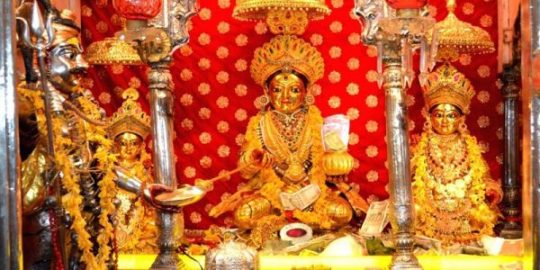
The Annapurna Temple in Varanasi is a beautiful and serene temple dedicated to the Hindu goddess Annapurna.
This impressive temple complex was built in the 18th century and is one of the most important religious sites in the city.
The main temple is surrounded by several small shrines and pavilions and is surrounded by a large courtyard filled with lush foliage.
Inside the temple are ornate sculptures, carvings, and paintings depicting various scenes from Hindu mythology.
There is also a large pond in the courtyard, where devotees can make offerings and pray for blessings.
Every day, the Anpurna Temple is filled with worshippers who come to pray, meditate, and seek guidance from the goddess. The peaceful atmosphere of the temple makes it a popular destination for tourists looking to immerse themselves in the spirituality of Varanasi.
Annapurna temple is one of the most iconic places to visit in Varanasi.
6. Assi Ghat Varanasi

Assi Ghat is one of the most famous ghats in Varanasi.
Located at the confluence of the Ganges and Assi rivers, it is an important pilgrimage site for Hindus.
It is believed that the Ganges descended to Earth at Assi Ghat and it is here that the Hindu god Shiva performed austerities.
Assi Ghat is one of the most popular spots for tourists in Varanasi. It is known for its vibrant atmosphere with people from all walks of life coming together to bathe in the holy waters, perform rituals, and enjoy the mesmerizing sunsets.
The ghat is also home to a number of temples and shrines, making it an important destination for pilgrims.
Assi Ghat is also a great place just to sit back and observe the hustle and bustle of city life.
You can watch people going to the temple, taking boat rides, or simply relaxing by the river.
It's a great place to take photos and experience the beauty of Varanasi from a different perspective.
Assi Ghat is a great places to visit in Varanasi....Read more
6 notes
·
View notes